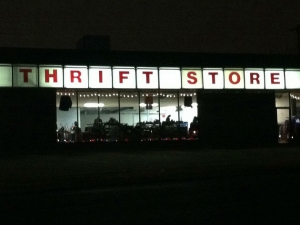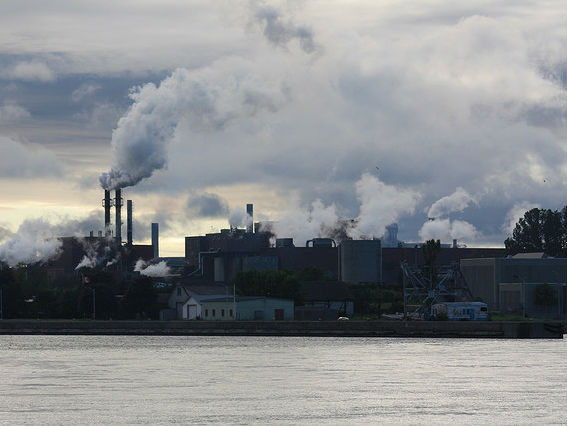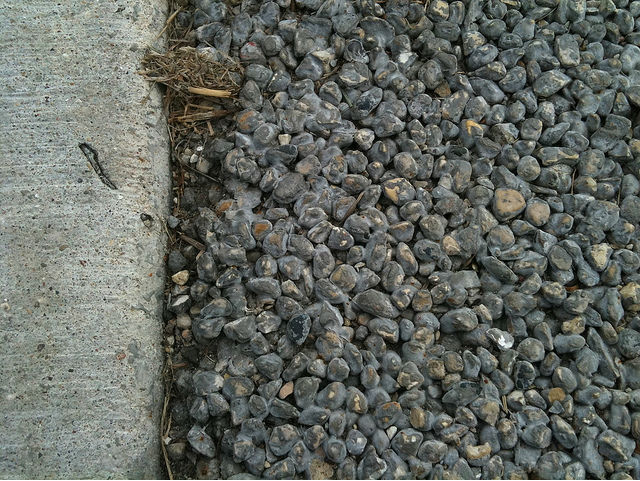 |
| Reviews and Templates for Expression We |
Building smart cities: food, materials and finance

Standards relevant to the smart cities of the future are emerging — through new paradigms, city-centric networks, alliances and consortia and certification bodies. The best practices that arise from these efforts will provide or inform the standardization which will lead us to 21st century "new normal" for cities.
This brief compilation of emerging standards and practices reveals the opportunities for innovation and the potential for 21st century transformation.
Reuse of materials coming into style
The not-for-profit Carbon Trust will pilot a new international standard for waste this summer, designed to help organizations and businesses demonstrate that they are measuring and managing down their waste streams. The proposed waste standard will be modeled on Carbon Trust's previous standards. Meanwhile, C40 Cities hosts a network on Sustainable Solid-Waste Systems, as it relates to climate; here, leading cities share best practices.
This materials-management climate link is underscored by the EPA's West Coast Forum on Climate and Materials. Its Web Academy and resource library combine scientific research with city-led climate action experience to drive best practices in lifecycle-materials-management for cities.
One of many overlooked sources of civic waste is the clothes on our backs, alerts Lisa Hix of Collectors Weekly in her review of sustainable fashion pioneers. Perhaps one day the business model of retailers such as vintage and used clothing store Buffalo Exchange will become the new normal.
Food nourishes the Earth
Another key source of civic waste is food. The GS-46 Environmental Standard for Restaurants and Foodservices is a Green Seal specification approved as an ANSI standard. The standard addresses such subjects as food purchasing, waste reduction, resource efficiency and water and energy management.
Meanwhile, a new international standard, the Global Food Loss and Waste Protocol is being developed by the World Resources Institute (WRI). This standard “will enable countries and companies to measure and monitor the food loss and waste that occur within their boundaries and value chains in a credible, practical and consistent manner,” explained experts from WRI.
 This red amaranth was grown in subway tunnels. (Credit: Growing Underground) Composting food is also key. James Goodman, director of futures at Forum for the Future, explained, "A major cause of [declining soil quality] is urbanization. As more people move to cities, more food is transported to those cities, moving nutrients away from where they are harvested and into waterways and landfill." Composting urban food waste provides a potential way to put those nutrients back.
This red amaranth was grown in subway tunnels. (Credit: Growing Underground) Composting food is also key. James Goodman, director of futures at Forum for the Future, explained, "A major cause of [declining soil quality] is urbanization. As more people move to cities, more food is transported to those cities, moving nutrients away from where they are harvested and into waterways and landfill." Composting urban food waste provides a potential way to put those nutrients back.
At the same time, food is beginning to be grown within the boundaries of the city itself. Investor eyes are watching as zero-carbon food is being grown in London underground tunnels. LED-enabled indoor vertical farming is letting a grower in Chicago harvest 25 growing cycles per year. If these efforts become cost-effective, we may see a new normal emerge for sourcing the vast urban appetite for vegetables.
Indeed, urban agriculture of many kinds is on the rise. Here to help is the EPA, which offers guidelines for safe gardening practices for urban agriculture (PDF). Close by is SAGE, a center for sustainable agriculture education, which offers a toolkit for urban-edge agricultural parks.
It matters where food comes from. Observed urban food author Peter Ladner, “Anybody who is involved in planning cities … should be aware that … we're going to see more and more food grown in unconventional places. ... When you get food right, all sorts of other things happen that are positive.” Analyst and author Wayne Roberts agreed that food initiatives can lever change in other areas of city life, including city transportation systems and urban economic development.
Financing and economic development
The Smart Cities Council Financing Guide provides “detailed, expert analysis of 28 municipal finance tools … for city leaders investing in the future,” many of them innovative in nature.
The NatLab Consortium offers an in-depth green infrastructure financing guide which "validates the business case for both innovative public policy and private investment in green infrastructure [such as porous pavement, green roofs, parks, roadside plantings and rain barrels] by drawing from lessons from the energy efficiency finance sphere. … [These are achieved] usually at the same or lower cost than a purely 'traditional' gray infrastructure solution."
Matching supply and demand in the energy finance field is a challenge explored in the American Council for an Energy Efficient Economy's Finance Forum (ACEEE FF). Explained one speaker, "Within each [market] segment we need to really understand decision points and when interventions can be made."
C40 hosts peer-to-peer information-exchange networks focusing on sustainable infrastructure finance and economic development and green growth.
Meanwhile, "the practice of paying for civic improvements via crowd-funding [seems] to be picking up steam today in parts of the world," observed Liz Enbysk of the Smart Cities Council. With projects ranging from free public wi-fi and bike-share stations to helping the homeless, crowd-funded civic projects could become a new normal for facilitating bottoms-up progress.
All forms of city-sited investment create jobs, leading to the development of greater economic opportunity. Transportation is also key to supporting economic development. Future-shaping companies such as StreetLightData are mining open data in the city street context to inform economic development, urban planning and more.
City business and measurement indicators
Through the WBCSD's Urban Infrastructure Initiative, cities can gain early business support in their sustainable solutions planning processes. Meanwhile, ICLEI provides cities with tools for budgeting and managing natural resources and for sustainable procurement. The Smart Cities Council includes an “Inside City Hall” section in its Smart Cities Apps Gallery, which "features a collection of useful tools to help staffers and elected officials get the city's business done," according to SCC Chairman Jesse Berst.
 Many tools help cities report on their greenhouse gas emissions (Credit: Scazon via Flickr).
Many tools help cities report on their greenhouse gas emissions (Credit: Scazon via Flickr).
Measurement indicators are key to running a city sustainably. At the top of any smart city dashboard should be visualizations on climate change and the city's own contribution to it. The GhG Protocol, developed by the World Resources Institute and the World Business Council for Sustainable Development, and the derivative ISO 14064-1 are prominent and compatible standards for measuring greenhouse gas emissions in organizations.
More city-specific is the Global Protocol for Community-Scale Greenhouse Gas Emissisons, developed by ICLEI, C40, WRI and others. The GPC-compliant Harmonized Emissions Analysis Tool plus (HEAT+) reports findings to the international carbon Cities Climate Registry. Another climate registry is the CPD cities program, a reporting platform which provides measurement, feedback, learning and visibility. C40's Measurement & Reporting Network also provides cities with tools, best practices and support mechanisms to facilitate quality data gathering and reporting.
Beyond climate change and carbon metrics, ISO has come out with ISO 37120, a standard which outlines indicators for "city services and quality of life" aimed at the sustainable development of communities. (The newly formed ANSI Network on Smart and Sustainable Cities is hosting a free ISO 37120 preview.) With over 100 key indicators in 18 categories, this new standard "will enable any sized city in a developed or a developing economy to measure its social, economic and environmental performance in relation to other cities." ISO 37120 initially was developed using the Global City Indicators Facility framework. Patricia McCarney, director of the GCIF, anticipates "a new science of city building, one based on the evidence of data."
Hand in hand with GCIF is the complementary World Council on City Data, "an international platform for bringing together open, globally comparable data for cities … to help city leaders build better, cleaner, more efficient environments for their citizens."
Boyd Cohen, a member of the Smart Cites Council's Advisory Board, collaboratively has developed and applied a set of indicators specifically for benchmarking and ranking one definition of a “smart city” (see example results). Cohen's ranking methodology uses 28 core indicators (of a much larger set) across six categories of a conceptual smart cities wheel. Atypical city indicators, such as metrics on diversity, community aesthetics and the wealth of social offerings, can inform the evolving business models of smart cities, asserted Justin Bibb, citing discoveries by the Knight Foundation.
What's next
Cities today have the opportunity and responsibility to move in a "net positive" direction, and create the world of tomorrow where living systems thrive.
We have a long way to go before these and other emerging standards graduate to become the new normal for cities. But it is standards such as these that will lift cities to become a 21st century platform, and the starting place for an exciting next wave of innovation.
|
|
|
|
Copyright 2011 Energy and Technical Services Ltd. All Rights Reserved. Energyts.com |
